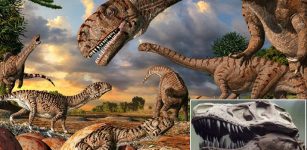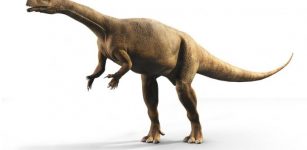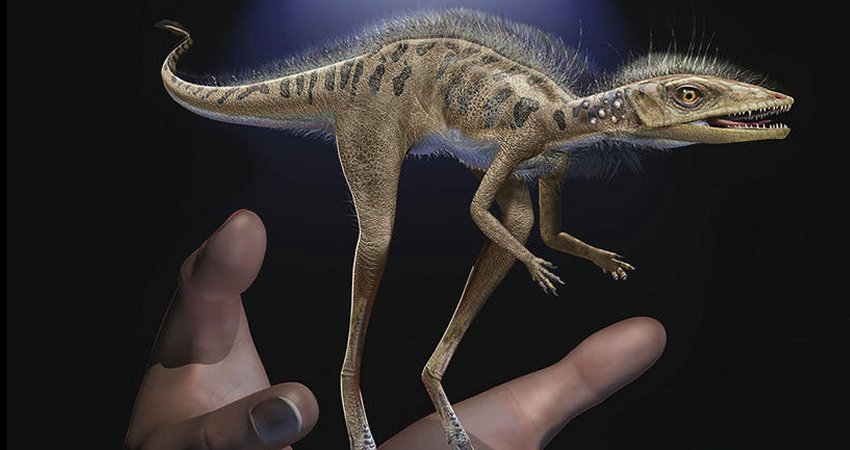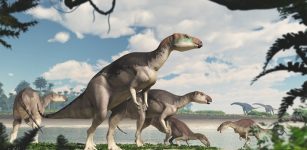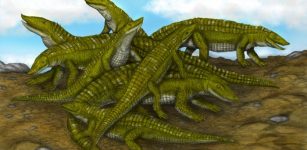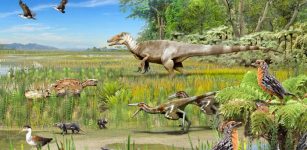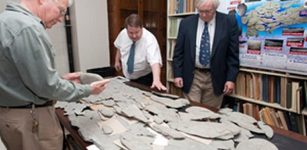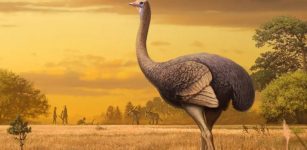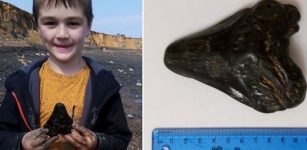‘Reaper of Death’: Oldest Dinosaur In The T-Rex Family Discovered In Alberta
Eddie Gonzales Jr. – MessageToEagle.com – Scientists discovered a new predatory dinosaur from Alberta whose name means “reaper of death”.
Called Thanatotheristes, the 79-million-year-old fossil is the oldest tyrannosaur known from northern North America and is the first new tyrannosaur species identified in Canada in 50 years.
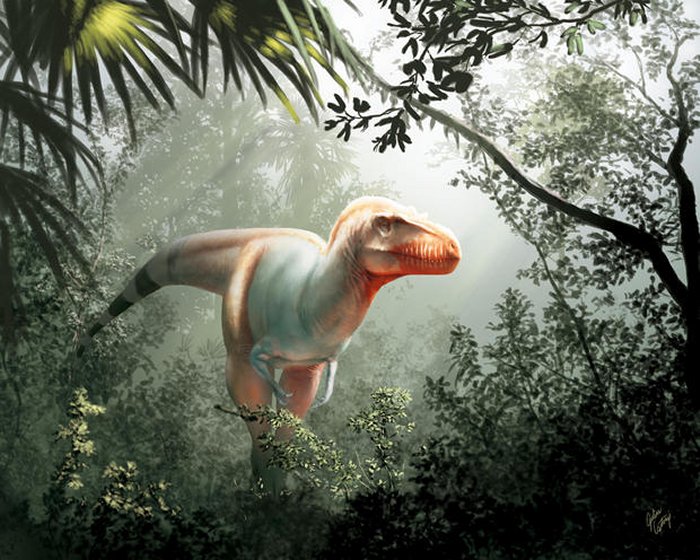 Thanatotheristes degrootorum was around eight meters long and hunted around 80 million years ago. Illustration: Julius Csotonyi
Thanatotheristes degrootorum was around eight meters long and hunted around 80 million years ago. Illustration: Julius Csotonyi
The new genus is found to be the sister taxon to Daspletosaurus spp. and together form the new clade Daspletosaurini. It was approximately eight meters long, likely preyed on large plant-eating dinosaurs, such as the horned Xenoceratops and the dome-headed Colepiochephale that were part of the ecosystem.
“This is the oldest occurrence of a large tyrannosaur in Canada, found in an older window of time than where previous tyrannosaurs have been found,” study co-author Dr. Darla Zelenitsky, PhD, the University of Calgary’s principal dinosaur researcher and assistant professor in the Faculty of Science’s Department of Geoscience said in a press release.
Jared Voris, a Ph.D. student at Calgary who discovered the specimen, led the study said the fossil specimen is very important to understanding the Late Cretaceous period when tyrannosaurs roamed the Earth. The fossils have unique features that separate them from those of other members of the tyrannosaur family. It gives us a new understanding of tyrannosaur evolution and how these animals interacted with their ecosystem.”
Study co-author Dr. François Therrien, PhD, curator of dinosaur palaeoecology at the Royal Tyrrell Museum said:
“With this new species, we now know that tyrannosaurs were present in Alberta prior to 77 million years ago, the age of the next-oldest tyrannosaur. We can tell from the skull how Thanatotheristes is related to the other, better-known tyrannosaurs from Alberta.”
Thanatotheristes degrootorum, a new genus and species, was identified from a fragmentary fossil consisting of parts of the skull and the upper and lower jaw bones. The bones, which had apparently tumbled from a cliff and shattered on the shore of the Bow River, were found by John and Sandra De Groot (after whom the new species was named) in 2010 near the town of Hays, about 200 kilometers southeast of Calgary.
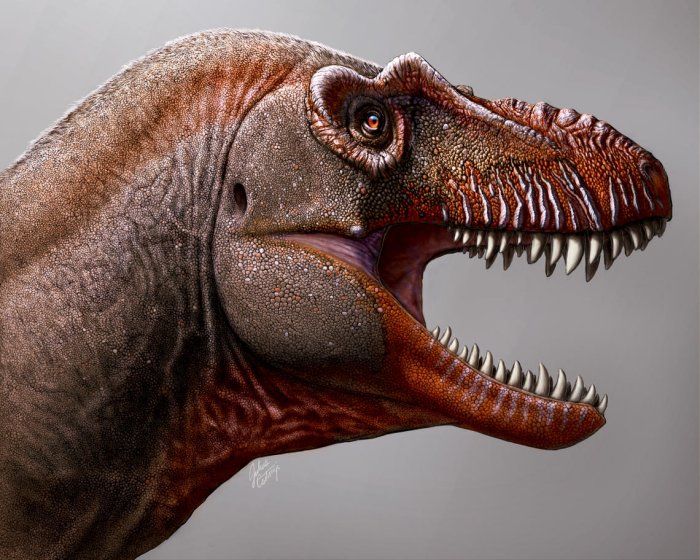 Thanatotheristes degrootorum is named after John and Sandra De Groot, who found the fossils. Illustration: Julius Scotonyi, courtesy Royal Tyrrell Museum
Thanatotheristes degrootorum is named after John and Sandra De Groot, who found the fossils. Illustration: Julius Scotonyi, courtesy Royal Tyrrell Museum
The specimen lay in a drawer at the Royal Tyrrell Museum until last spring, when Voris examined it.
“We found features of the skull that had not been seen before in other tyrannosaurs,” he says. “The fossil has several physical features, including ridges along the upper jaw, which clearly distinguishes it as being from a new species.”
Thanatotheristes is a close relative of two other well-known tyrannosaur species, Daspletosaurus torosus and Daspletosaurus horneri. All three species form a newly named group of dinosaurs called Daspletosaurini. This group had longer, deeper snouts and more teeth in the upper jaws than tyrannosaurs found in the southern U.S., which had shorter, bulldog-like faces.
The differences in size, skull shape and other physical features among tyrannosaur groups from various geographical regions may be adaptations to different environments, available prey type, and hunting strategies, Zelenitsky says.
“Some species are better suited to certain environments. This reduces competition and gives species a better chance of survival. Such “provinciality” can also be seen in modern ecosystems with lions and tigers, Voris added.
Tyrannosaurs didn’t share one general body type. Instead, groups of different tyrannosaur species evolved distinct skull forms, body sizes, and other physical features, spreading into different environments where each group thrived.
“The next step is to test that hypothesis further and compare how tyrannosaur species from various geological regions differed,” Voris says.
Written by Eddie Gonzales Jr. – MessageToEagle.com Staff

